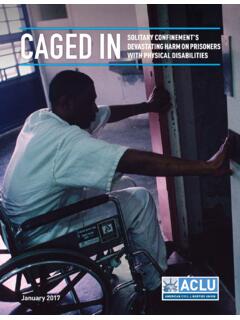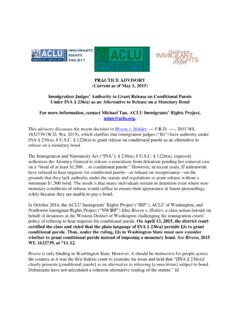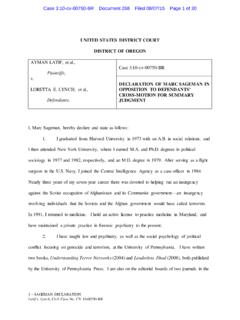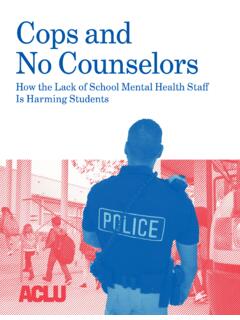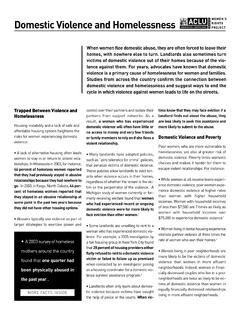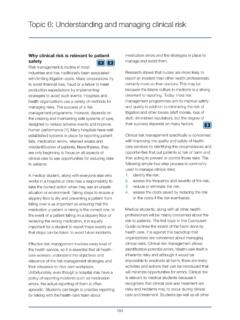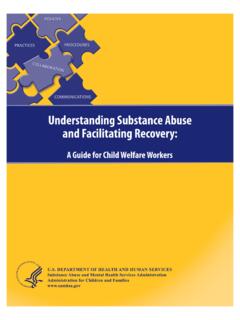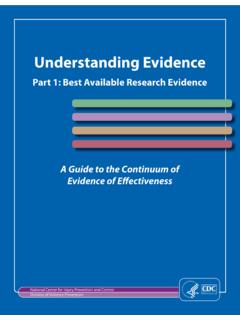Transcription of Understanding Gender-Biased Policing
1 Understanding Gender-Biased Policing :Police Misconduct, Domestic Violence, and Sexual AssaultMay 2016In cities and states across the country, advocates and activists are calling for an end to discriminatory Policing against people of color, women, LGBT people, people with disabilities, and immigrants. They are working to reform police practices that put lives in danger and undermine our system of justice. In this era of reform, new attention must be paid to the problem of Gender-Biased Policing , specifically the improper, discriminatory, and unlawful ways in which law enforcement officials respond to or commit crimes involving domestic violence and sexual assault.
2 Voices across the country including the Department of Justice, anti-violence and civil rights advocates, and law enforcement leaders have sounded the alarm on police practices and policies that are premised on pernicious gender stereotypes about survivors of violence. Gender-Biased Policing not only denies victims of domestic violence and sexual assault the equal protection of the law and protection from harm , but also destroys trust between law enforcement and the communities they serve. This briefing paper defines and provides examples of Gender-Biased Policing , suggests ways for police departments to address bias that may underlie certain practices, and policies and offers steps advocates can take to work toward police Gender-Biased PolicingGender- biased Policing is a term used to capture certain law enforcement practices that are rooted in (conscious or unconscious) gender stereotypes, have a discriminatory and disproportionate impact on women, and subject women and LGBT people to harassment, violence, or hostility by police Policing occurs most often in cases of domestic violence and sexual assault.
3 Examples of Gender-Biased Policing include: Failing to properly investigate or misclassifying domestic violence and sexual assault complaints before a full investigation is conducted because of the victim s gender , sexual orientation, dress, sexual history, criminal history, emotional state, or appearance; Failing to test sexual assault kits in a timely fashion; Discounting intimate partner violence against LGBT individuals because it is committed against a same-sex partner; Harassing transgender people, particularly trans women of color, because of their gender identity; Failing to hold police officers accountable and permitting them to remain in positions of power when they have committed domestic violence or have used their position to sexually harass or Prevalence of Gender-Biased PolicingThere is little doubt that many police officers across the country do their jobs with professionalism, integrity, and care.
4 At the same time, investigations by the Department of Justice, advocates, and others have revealed the chronic and systemic patterns of bias that exist in police departments when individuals, predominantly women but also some men, seek police assistance in domestic violence and sexual assault following examples of Gender-Biased Policing are only the tip of the iceberg. The Detroit Police Department for years failed to process more than 11,000 rape kits. This occurred, in part, because of police reports that questioned the victims credibility; rape survivors were commonly assumed to be prostitutes and adolescents were assumed to be Prevalence of Gender-Biased Policing The Metropolitan Police Department of Washington engaged in practices that resulted in misclassified or undocumented sexual assault cases.
5 There were no police incident reports for a substantial number of cases recorded by a hospital as having been reported to the police and officers utilized poor interviewing techniques including one who went so far as to ask a rape victim if her assailant was good at oral The Missoula (Montana) Police Department failed to employ key investigative practices that would have safeguarded potential evidence and protected the rights of victims. The MPD did not obtain timely and credible statements from witnesses and suspects; engaged in investigative and interview practices that often discouraged victims from participating in investigations; made numerous statements reflecting stereotypes such as telling a woman who was gang raped that it was probably just a drunken night and a mistake and repeatedly asking her if she had said no and to reenact how she had said no.
6 Failed to institute any policy guidance on responding to sexual assault and instead left the conduct of investigations entirely subject to the discretion of MPD The New Orleans Police Department systematically failed to properly investigate domestic violence cases, did not address police harassment of LGBT individuals, and underreported the number of rape crimes that occurred in the city. For example, the NOPD reported that there were more homicides than rapes despite the fact that the opposite is true in most cities across the country; regularly shut down investigations of sex crimes by classifying sexual assault complaints as miscellaneous or non-criminal cases because the victim had a history of mental disability or prostitution or lied about being arrested in the past.
7 And did not provide specific guidance on how to investigate domestic violence cases and assigned only three detectives to the Domestic Violence Unit, relying on untrained district officers to carry out the majority of the The Philadelphia Police Department downgraded thousands of rapes and other sex crimes to a noncriminal category. In doing so, the PPD precluded a full and complete investigation of the crime and victims were never advised that their complaints had been Prevalence of Gender-Biased Policing Policing also includes sexual assault or domestic violence committed by police officers that goes unpunished or is ignored within the law enforcement agency.
8 Police departments and the federal government do not consistently track this problem, but there is no doubt it is a serious issue in many departments. In fact, a report found that sexual misconduct was the second most frequently reported form of police misconduct. The Puerto Rico Police Department rarely took action when their own officers committed domestic violence, allowing 84 officers who had been arrested two or more times for domestic violence to remain active on the force. The Associated Press, in a yearlong investigation of sexual misconduct by law enforcement, uncovered 1,000 officers who lost their badges in a six-year period for rape and other sexual assault.
9 AP concluded that the number was unquestionably an undercount because it represented only officers whose licenses were revoked and not all states take such action. Additionally, some states offered no records because they have no statewide system to decertify officers for misconduct. Even among states that provided records, some reported no officers removed for sexual misconduct even when cases were identified in news stories or court records. Lawyers and police chiefs told the AP that some departments remain silent about improprieties, allowing officers to resign, keep their certification, or switch to other jobs. These cases and investigations, which barely scratch the surface, demonstrate that Gender-Biased Policing is a significant problem in police departments across the Impact of Gender-Biased Policing .
10 Perpetuating Violence, Undermining Our Criminal Justice SystemONEMILLIONWOMENMore thanare survivors of domestic violence every year10 Nearly a quarter of women experience domestic violence in their lifetimeWomen of color and LGBT individuals experience disproportionately high rates of domestic violence and sexual assault115 Calls regarding domestic violence constitute the single largest category of calls received by police departments, making up half of all calls in some communities12have experienced rape, physical violence, and/or stalking by an intimate partner1344%of lesbian women 61%of bisexual women andAlmost20%of menhave experienced rape in their lifetimes9and aboutThe Impact of Gender-Biased Policing police officers rely on outdated and discredited stereotypes to shame or dismiss victims and fail to fully investigate a claim of sexual violence, those officers undermine efforts to end violence by discouraging victims from coming forward and allowing abusers to continue to commit crimes with experience of Gender-Biased Policing causes tremendous and rippling damage in the lives of victims, families, and entire communities.
